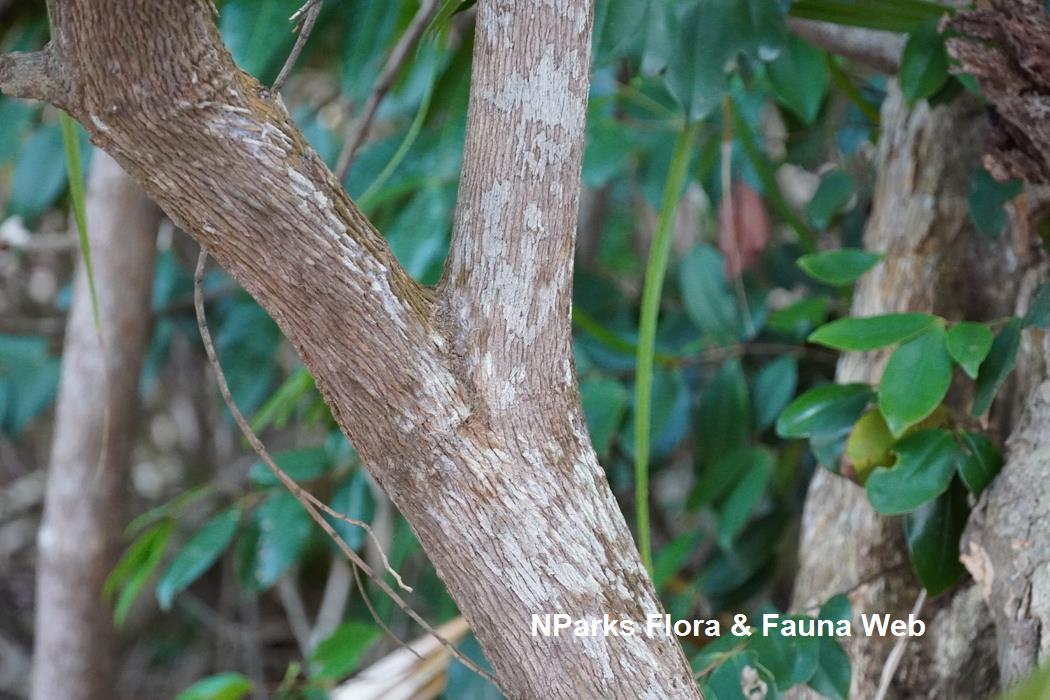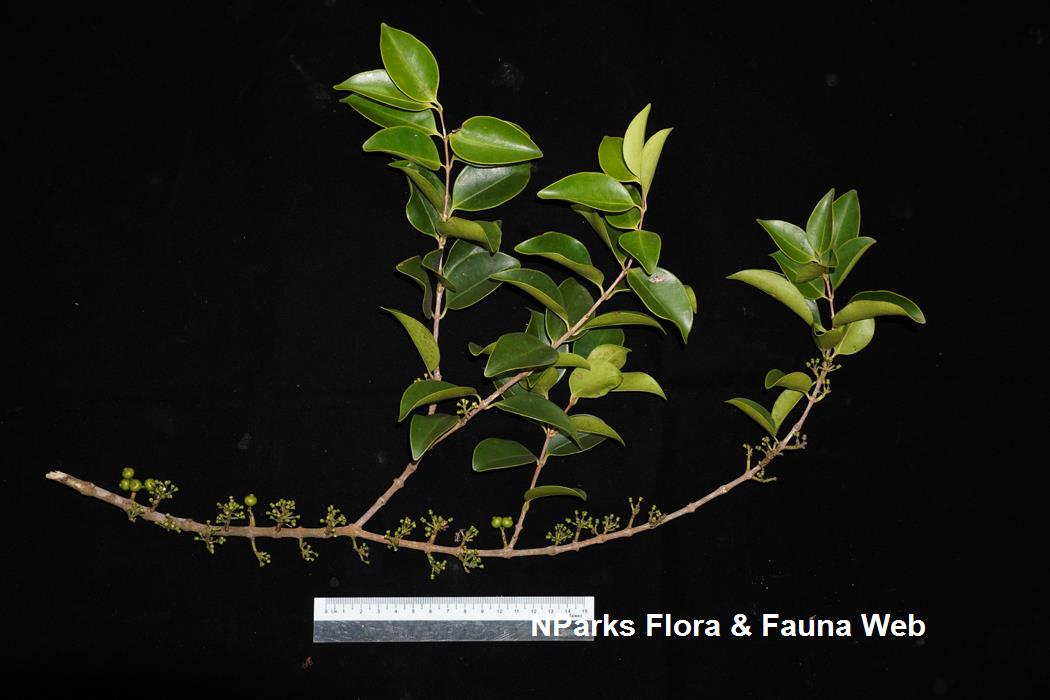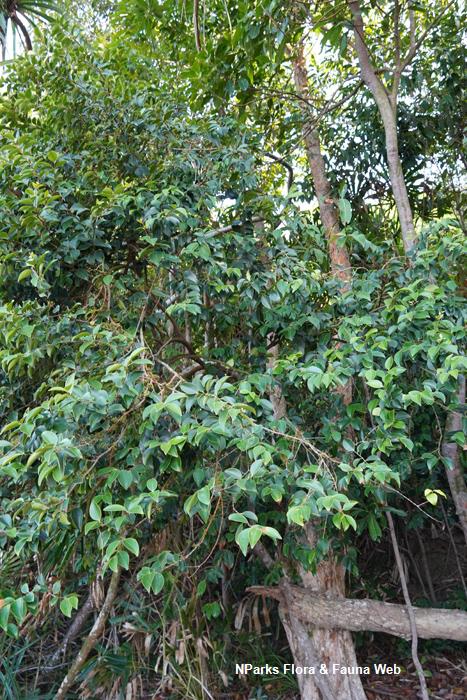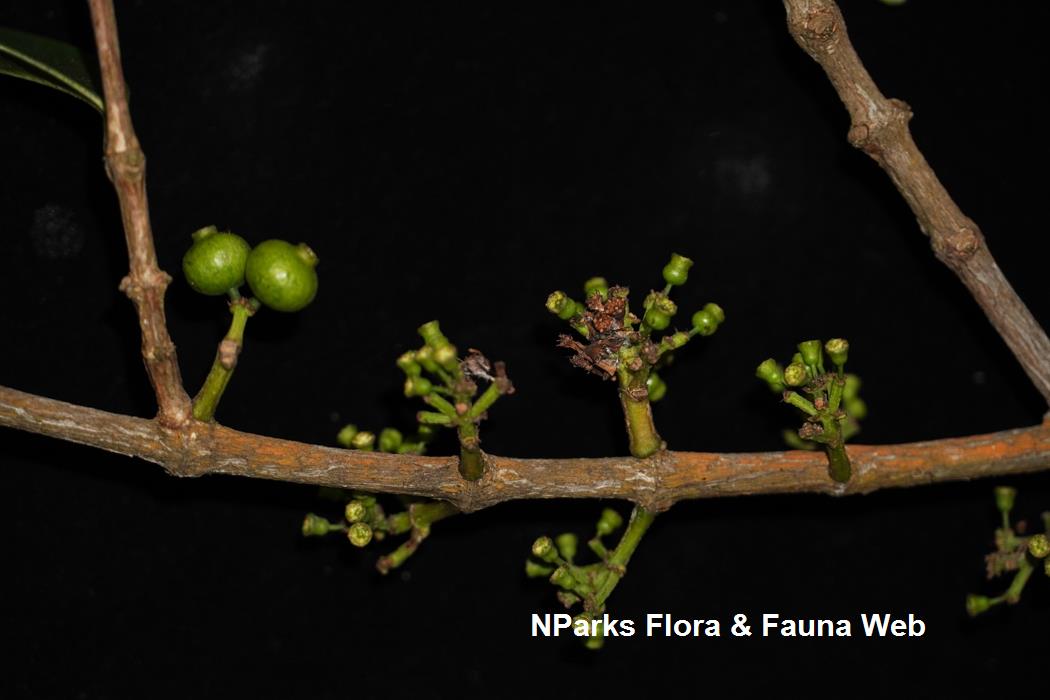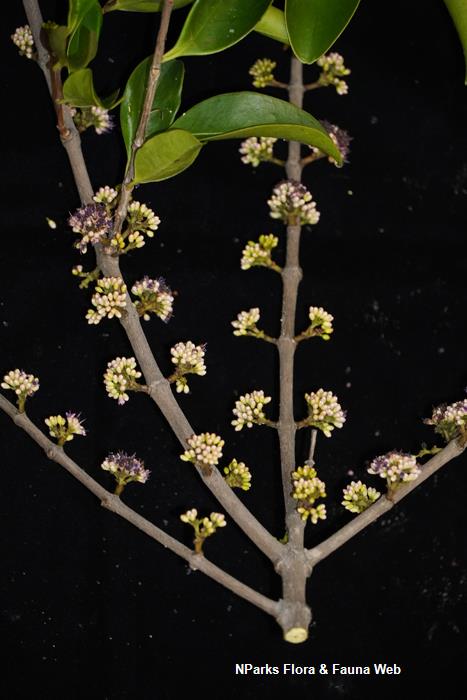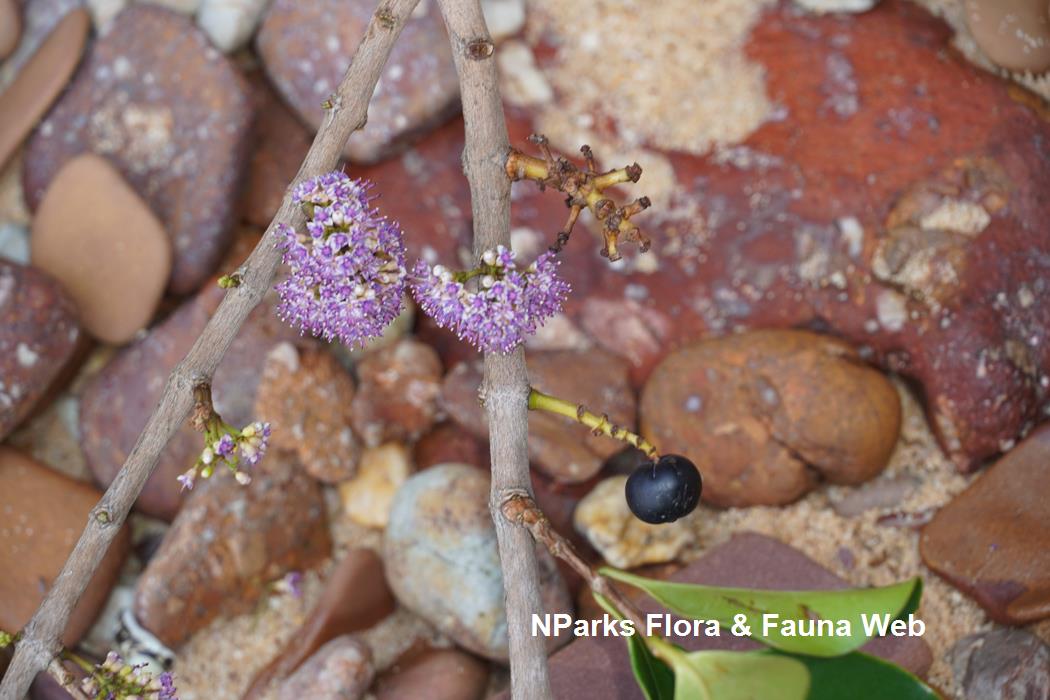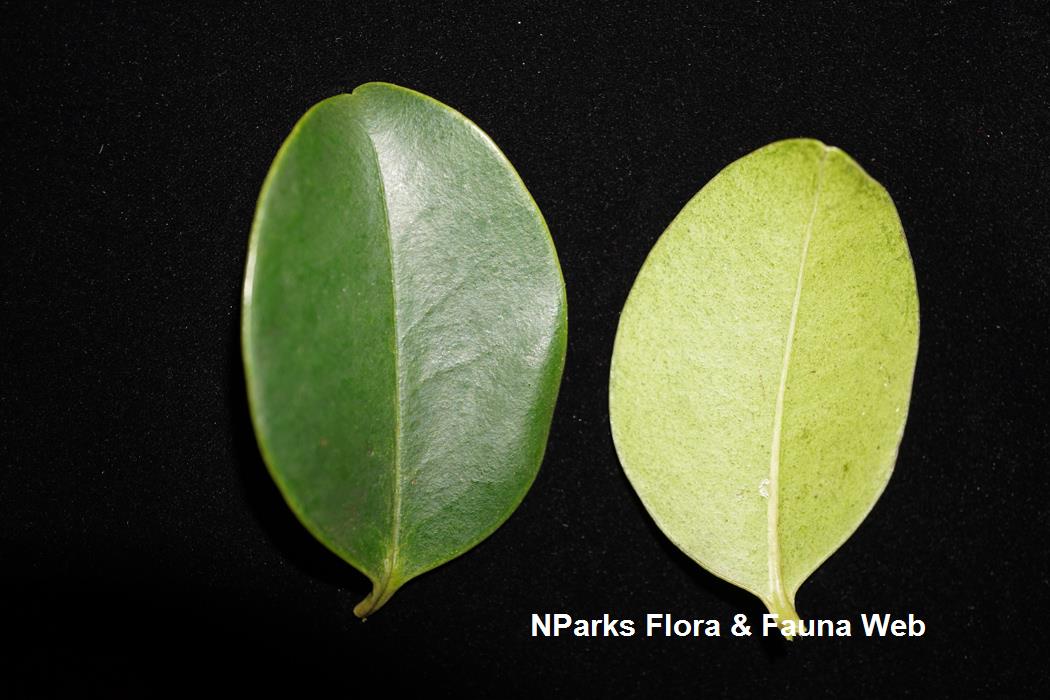
Back
Memecylon edule Roxb. var. edule
| Family Name: | Melastomataceae |
| Synonyms: | |
| Common Name: | Nipis Kulit, Delek Air, Delek Bangas, Kaayam, Nemaaru |
Name
Classifications and Characteristics
| Plant Division | Angiosperms (Flowering Seed Plants) (Dicotyledon) |
|---|---|
| Plant Growth Form | Tree (Shrubby (1m-5m)), Shrub |
| Lifespan (in Singapore) | Perennial |
| Mode of Nutrition | Autotrophic |
| Plant Shape | Shrubby |
| Maximum Height | 3 m to 7 m |
Biogeography
| Native Distribution | India, Indochina, Philippines, Malaysia, Singapore, Indonesia |
|---|---|
| Native Habitat | Terrestrial (Coastal Forest), Shoreline (Sandy Beach) |
| Preferred Climate Zone | Tropical |
| Local Conservation Status | Native to Singapore (Endangered (EN)) |
Description and Ethnobotany
| Growth Form | Big shrub or small shrubby tree, usually 3-7m tall, sometimes reaching 12m height. |
|---|---|
| Trunk | Single or multiple. Bark greyish-brown, finely ridged and papery-thin -- hence its Malay name Nipis Kulit ("thin skin"). |
| Foliage | Leaves opposite, sub-leathery with indistinct veins, blades 3.8-7.6cm long by 2.5-3.8cm wide, petiole very short (up to 0.6cm), apex bluntly acute, margins upcurled. Young leaves glossy red. |
| Flowers | Small (6.35mm across), petals and calyxes pink, topped by blue-stalked stamens, very fragrant, clustered into small panicle inflorescences arising directly from twigs at leaf axils. |
| Fruit | Small globular berries, with persistent calyx at base, borne in small axillary bunches, ripening from green to yellow to black, pulp eaten by birds. |
| Others - Plant Morphology | Conservation Status: Native to Singapore, endangered. |
| Habitat | Occurring in lowland forests, at coastal cliffs, as thickets along sandy to rocky seashores. |
| Similar | Resembles and often mistaken for Memecylon ovatum whose slightly-scented flowers have blue petals and blue-stalked stamens; whose fruits ripen from green to red to black; and whose leaves are larger (6.3-11.4cm by 3.8-6.3cm) with pointed tips and longer petioles (0.6-1.3cm). Differentiated from the blue-flowered Memecylon oleifolium, whose leaves have distinctly caudate (tail-like) tips. |
| Cultivation | Slow-growing. Takes full sun to bright shade. Tolerant of saline soils. If grown as tree, prune periodically and remove water shoots from trunk for better form. Propagate by stem-cuttings, air-layering or seeds. |
| Etymology | Genus epithet 'Memecylon' derived from 'memaecylon' -- as used by ancient Greek philosophers Dioscorides and Pliny to describe the red fruits of Arbutus unedo (Oriental Strawberry Tree) -- alluding to the pink to reddish berries often produced by members of the 'Memecylon' genus. Species epithet 'edule' means 'edible', a reference to the edible but insipid fruits. |
| Ethnobotanical Uses | Edible Plant Parts : Edible Fruits Food (Herb or Spice) (Fruit or Vegetable) Others: Timber: Wood used for rafters, house posts, fuelwood and charcoal. Food: Ripe fruits sometimes eaten, pulp has rather astringent quality. Products: Yellow dye and mordant can be extracted from leaves, used for dyeing silk in Thailand. Medicinal: Leaves have anti-inflammatory and analgesic properties, traditionally used to heal burns and wounds without scarring. Bark applied as poultice to bruises. Leaf decoction used to treat gonorrhoea in India, while leaves and roots are used to treat dysentery. Root and heartwood decoction used to bring down fever associated with colds, chicken pox and measles. |
Landscaping Features
| Desirable Plant Features | Ornamental Flowers, Fragrant (Flowers) (Day), Ornamental Fruits |
|---|---|
| Landscape Uses | Coastal, General, Hedge / Screening, Container Planting, Beachfront / Shoreline |
| Thematic Landscaping | Naturalistic Garden |
Fauna, Pollination and Dispersal
| Fauna Pollination Dispersal Associated Fauna | Bird-Attracting |
|---|
Plant Care and Propagation
| Light Preference | Full Sun, Semi-Shade |
|---|---|
| Water Preference | Moderate Water |
| Plant Growth Rate | Moderate |
| Rootzone Tolerance | Fertile Loamy Soils, Poor Infertile Soils, Saline Soils / Salt Spray |
| Propagation Method | Seed, Stem Cutting |
Foliar
| Foliage Retention | Evergreen |
|---|---|
| Mature Foliage Colour(s) | Green |
| Mature Foliage Texture(s) | Smooth, Leathery, Thick |
| Prominent Young Flush Colour(s) | Red |
| Foliar Arrangement Along Stem | Opposite |
| Foliar Shape(s) | Non-Palm Foliage (Ovate, Elliptical) |
| Foliar Venation | Pinnate / Net |
| Foliar Margin | Entire |
| Foliar Apex - Tip | Acute |
| Typical Foliar Area | Notophyll ( 20.25cm2 - 45 cm2 ) |
Non - Foliar and Storage
| Trunk Type (Non Palm) | Woody |
|---|---|
| Stem Type & Modification | Woody |
| Root Type | Underground (Tap Root, Fibrous Root) |
Floral (Angiosperm)
| Flower & Plant Sexuality | Bisexual Flowers |
| Flower Colour(s) | Blue, Pink |
|---|---|
| Flower Symmetry | Radial |
| Flower Size - Remarks | 6.35mm across |
| Inflorescence Type | Panicle |
| Flowering Habit | Polycarpic |
Fruit, Seed and Spore
| Mature Fruit Colour(s) | Black |
|---|---|
| Fruit Classification | Simple Fruit |
| Fruit Type | Fleshy Fruit , Berry |
Image Repository
Others
| Master ID | 29684 |
|---|---|
| Species ID | 3993 |
| Flora Disclaimer | The information in this website has been compiled from reliable sources, such as reference works on medicinal plants. It is not a substitute for medical advice or treatment and NParks does not purport to provide any medical advice. Readers should always consult his/her physician before using or consuming a plant for medicinal purposes. |

